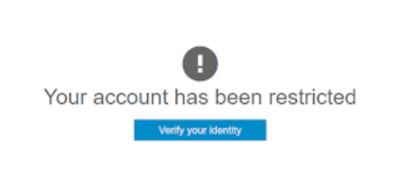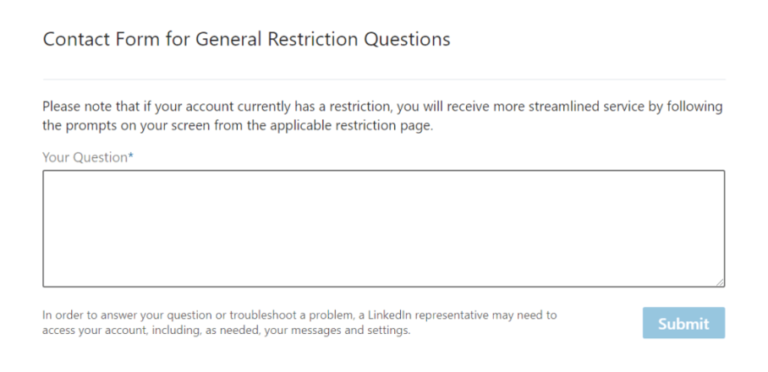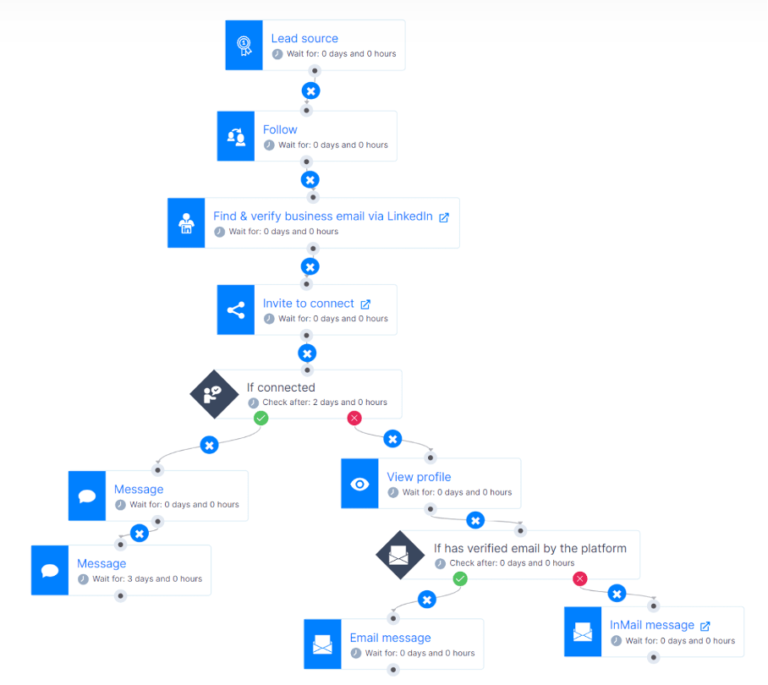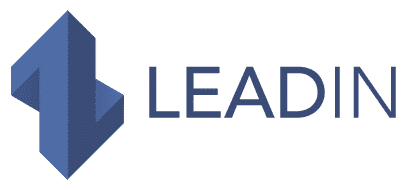Has your LinkedIn account been restricted? Perhaps you think he’s entered LinkedIn’s notorious “prison”. Don’t worry. Together, we’ll get it back. Sit back and relax as we review the following points:
- What’s the difference between a restricted LinkedIn account and a so-called suspension?
- 8 reasons why your LinkedIn account has been restricted
- 4 proven steps to regain access to your LinkedIn account
- How to secure your LinkedIn account for the future
What does it mean when your LinkedIn account is restricted?
The fact that your LinkedIn account is restricted means that you have acted, knowingly or unknowingly, against the policies of the professional community. This has led LinkedIn to limit your ability to perform other actions using your account. You know your LinkedIn account is restricted because this notification appears when you log in.

In some cases, the restriction/suspension is temporary or includes a note indicating the end date of the restriction. In more serious circumstances, you should contact the
LinkedIn support service
.
Don’t worry: at this stage, you can still recover your LinkedIn account.
What is the difference between restricting a LinkedIn account and suspending it?
Unlike restriction, where you get your LinkedIn account back after a 4-step process, LinkedIn suspension is a permanent account ban or endless loop of review process. It usually occurs after your LinkedIn account has been restricted several times.
There are two ways to indicate that you have been suspended by LinkedIn:
- If you receive feedback from LinkedIn support that your account restriction is final due to repeated violation of the terms of use. (Permanent)
- Or if you don’t hear from them for weeks after being restricted several times. (Not permanent, but the process takes a long time)
Ending up as a permanent suspension on LinkedIn only happens in extreme situations. So you shouldn’t have anything to worry about. However, you need to be careful and aware of your lead generation activity on LinkedIn.
Why is my LinkedIn account restricted?
Let’s review the 8 reasons why LinkedIn may restrict your account and identify the root cause.

1. You have created an account with a name that is not yours or that violates the user agreement.
People sometimes create their profile using the name of a company, another business or an entity, which goes against LinkedIn’s terms and conditions. If you’re using the platform to represent your company, the best decision you can make is to create a company page.
In addition, the creation of an account with a false name, if detected, may be subject to immediate restriction or prohibition, in accordance with LinkedIn’s user agreement.
2. You have created several profiles from the same device.
LinkedIn’s user agreement states that you can’t have more than one real profile created from a single device or proxy, especially if one of the accounts is restricted. If you intend to create several profiles, be prepared for all these LinkedIn accounts to be restricted.
3. Your content is unwanted or inappropriate.
LinkedIn will certainly ban your account if you publish content that violates its professional community policies. Depending on the degree of violation, your account may be temporarily or permanently restricted.
4. You have sent too many connection requests.
If you send a large number of connection requests each week, your LinkedIn account may be restricted. Therefore, if you repeatedly exceed your limits, your account will be partially restricted with the following message:

If you exceed the limit and your account is restricted, you will no longer be able to send further connection requests. However, you can access other LinkedIn features.
In general, the number of invitations you can send out is between 100 and 200 per week. The problem is that LinkedIn’s limiting algorithm changes frequently. That said, the limit itself is not definitive and depends on many factors. In other words, it can vary according to the following factors:
- if you’re just starting out,
- the health of your account,
- the number of current connections you have,
- or the connection acceptance rate.
5. Your acceptance rate is too low.
If you send a lot of empty or non-personalized requests to third-degree connections, your acceptance rate will be low. In other words, LinkedIn considers this to be suspicious activity and your LinkedIn account may be restricted.
6. Your invitations have been put on hold, ignored or marked “I don’t know this person”.
LinkedIn considers suspicious behavior to exist when most of your connection requests have remained pending for a long time or have been ignored. It is therefore preferable to delete them regularly.
In addition, empty, non-personalized login requests can encourage some users to click on the “I don’t know this person” button. If this number is high, you may be faced with a restriction. In addition, LinkedIn may ask you to provide a person’s e-mail address so that you can connect with them from that point on. It goes without saying that they will start monitoring your account.

The good news is that LinkedIn automatically lifts most of these restrictions within a week.
7. You’ve viewed too many profiles in a short space of time.
Sometimes, your LinkedIn account can be restricted if you view too many profiles in a day, or if you frequently consult a person’s profile. As a result, your account may be restricted because LinkedIn may record it as “bot” activity.
This situation is rare, but it can happen. So be careful how many profiles you view.
8. Use dangerous LinkedIn automation tools
It’s no secret that LinkedIn doesn’t like automation on its platform. Some tools comply with these guidelines, while others do not. So, one of the most common reasons people suffer restrictions is because they use the wrong LinkedIn tools that reveal bot-like behavior.
Yes, LinkedIn’s automation tools can help you grow your business if you’re a sales professional, founder, agency owner, marketer or recruiter. And yes, you can do this while keeping the restriction off your hands, having a healthy LinkedIn account, and respecting the reason LinkedIn was created – because of authentic interaction. That said, we’ll help you choose the right tool. Read on.
4 proven steps to regain access to your LinkedIn account
#Step 1 – Understand why it happened.
When your LinkedIn account is restricted, you won’t be able to connect to your account for several days. What’s more, LinkedIn often provides no explanation as to why your LinkedIn account has been restricted.
So, to understand why your LinkedIn account has been restricted, read the reasons above, or LinkedIn’s terms and conditions and user agreement.
#Step 2 – Follow the instructions on your account.
Sometimes, when your LinkedIn account is restricted, you’ll see a notification when you log in. LinkedIn will then ask you to verify your identity by uploading images of your ID, front and back.

Once you have done this, someone will examine your account. The process can take up to 48 hours. However, it often takes up to 7 days for LinkedIn to respond. You will also receive an email when LinkedIn lifts the restriction on your account. So be patient.
#Step 3 – Contact LinkedIn customer service.
If your LinkedIn account is restricted, this is usually temporary, and restrictions are lifted quickly when you verify your identity. However, if you are unable to verify your identity, or if your call has been pending for a long time, the next step is to contact LinkedIn customer service directly. You will probably need identification documents to confirm your identity.
Here’s how to contact LinkedIn customer service:
By writing to them on Twitter – (bear in mind that this doesn’t work very often)
By contacting them here, via the contact form.

In addition, here’s what you need to include in the call:
- Reasons to recover your account
- Acknowledgement of violation, it’s better to be honest (if you’ve made a mistake)
- Point out LinkedIn’s mistake (if LinkedIn wrongly banned your account)
- Assure LinkedIn support that this won’t happen again.
#Step 4 – Ask for help
You can also ask your network for help. If your contacts ask a question and support your account, this will help you access your LinkedIn account more quickly.
Have you managed to recover your LinkedIn account? Follow these 6 dos and don’ts to avoid being suspended again.
1. Know your limits on LinkedIn
While LinkedIn wants you to use its platform, it also wants you to use it intelligently. There are 5 types of direct interaction with users (excluding post comments and likes):
- Profile visits
- Follow-up
- Connection requests
- Messages
- InMails
Each of these actions has a daily limit that you must respect if you don’t want to jeopardize the security of your profile. What’s more, these limits are higher for premium account users and former users with larger networks.
Here are the limits that have proven safest if you’ve been using LinkedIn for a while:
- Profile visits: 80-120 per day
- Follow-ups: 80-120 per day
- Connection requests: 40-60 per day
- Sending messages: 60-100 per day
If you haven’t already done so, lower these limits further.
2. Remove your pending unaccepted connection requests
Keep your pending invitation requests between 400 and 600 and remove those older than 4 weeks. A higher number will put you on LinkedIn’s radar. Just bear in mind that you won’t be able to send that person an invitation for the next 3 weeks.
To cancel a LinkedIn invitation, you can use a manual method. However, what makes life easier in this kind of situation is the use of a commercial engagement tool. For example, LeadIn will send out invitations on your behalf, keeping them clean and safe. It will also automatically remove older invitations, so you don’t have to do it manually.
3. Warm up your LinkedIn account
Let’s assume that your LinkedIn account is relatively new, or that you’ve already obtained the restriction. The best approach is to start with a few actions and work your way up to the maximum limit.
If your LinkedIn account is new and you immediately send out a large number of invitations, LinkedIn will consider this to be suspicious activity.
Here’s what you can do to avoid this:
- Send 10 invitations to connect or 30 messages per day
- Slowly increase the number of activities from 5 to 10 per week
- Avoid sending invitations at weekends
- Take a little more time between each action
- Don’t connect to the third level of your network at the beginning.
- Delete all pending connection requests if they are not accepted after a few days.
4. Always send friendly, personalized messages
When connecting with people you know, always be sincere and include a personal message. For example, send a personalized invitation indicating why this person might want to connect with you. You’ll avoid being labeled a stranger.
If you need inspiration for connecting with new users, we’ve got plenty of LinkedIn connection message templates that might help. You can also add delightful images or custom GIFs.
5. Don’t sell immediately
Don’t try to sell immediately after establishing a connection with new users. This would only push them away and encourage them to ignore you. It’s important to build a relationship and bring value with updates, articles and messages before trying to close a deal.
6. Use the right LinkedIn automation tool
To understand which LinkedIn automation tool to choose and ensure your security, let’s first review all the tool types.
Extensions
Browser-based LinkedIn tools are browser extensions that rely on browser caching, making them much easier to detect. Other disadvantages of these tools are as follows:
- They do not offer a dedicated IP,
- Your computer must be switched on to operate,
- They automatically inject code into LinkedIn, placing a large “I use an automation tool” target on your back.
Office applications
The second type of LinkedIn automation tools are desktop applications that don’t offer dedicated IP addresses. They can’t run multiple accounts and don’t work in the background. As they work via the web, they don’t inject any code into LinkedIn, which makes them a little safer than browser-based tools/extensions.
Cloud-based tools
Cloud-based software is the best of all, for the following reasons:
- It is managed and processed by a dedicated IP address that protects your activity on the Internet (proxy).
- All your data is on the Internet
- They don’t inject any code into LinkedIn
- Advanced customization
- The software can run even when your computer is switched off.
- Only cloud-based software can offer multiple accounts and integrated inboxes
For all these reasons, we recommend using cloud-based tools because they work online, are much more secure than extension-based tools and are better than desktop applications.
For example, the excellent thing about
LeadIn
one of the cloud-based tools, is that it’s completely safe to use because of its location-based IP addresses. LeadIn also behaves like a human (e.g. clicking and scrolling as a human would), making it undetectable and reliable.
That makes LeadIn a really useful tool! What’s more, it offers many more
features
.
Moral of the story: Some tools are riskier than others, and it’s not hard for LinkedIn to spot this kind of manipulation and restrict your LinkedIn account, so choose wisely.
How to use an automation tool for LinkedIn without worries?
Given the security and functionality of your account, we’ve already explained why LeadIn is the perfect choice for the autopilot approach. So if you want to connect with more people every week, here’s how LeadIn can help you do it.
The fact is, you can use free and paid LinkedIn InMails and emails to “multi-channelize” your approach and connect with more people this way. The advantage of these methods is that you don’t risk having your LinkedIn account restricted. What’s more, LinkedIn will appreciate you using their paid InMails.
How do I create a prospecting campaign with LeadIn?
First, go to your campaign manager and choose the campaign type. Also enter the lead URL source or import the CSV file.

Then fill in the details of your campaign parameters and move on to the intelligent sequence.

From there, you can personalize messages and combine LinkedIn and email actions with if/else conditions to create a consistent prospecting flow that LeadIn will follow to reach your prospects.
To show an example, we’ve started with the Follow and Find steps and checked the email. Then we added the Invite to connect step and the condition to check whether LeadIn succeeds in doing so. If so, LeadIn can send a normal LinkedIn message and follow up.
However, if it fails to connect with prospects, you can check whether LeadIn has found the prospects’ publicly available professional emails. If so, LeadIn can send them an email. If not, he can send them a free or paid InMail.

When you’ve finished creating a consistent prospecting flow, click on Launch campaign, sit back and relax.
Frequently asked questions (FAQ)
What happens when your LinkedIn account is restricted?
When your LinkedIn account is restricted, you lose access to certain features or to the entire account, depending on the severity of the problem. This may occur in the event of a violation of LinkedIn policies or unusual activity. You will usually receive a notification explaining the restriction and the steps to resolve or contest it.
Why was my LinkedIn account limited to sending connection requests?
LinkedIn considers any excessive action, even sending connection requests, to be cause for restriction. If your LinkedIn account has been restricted for this reason, wait a few hours, then try again. Also make sure you don’t send many connection requests without a note or with the same note.
What should I do if my LinkedIn account is permanently restricted?
If your LinkedIn account is permanently restricted, consult LinkedIn’s user agreement and community policies to understand the violation. Then appeal the decision by contacting LinkedIn’s helpdesk with an explanation of your case. If the restriction has not been lifted, create another account with the new email address and follow the rules carefully.
Why does LinkedIn ask me for ID when my LinkedIn account is restricted?
LinkedIn may restrict your account and request identification due to unusual activity detected by LinkedIn’s security systems. The identification request ensures the security and integrity of its network by asking you to verify your identity so that LinkedIn can prevent unauthorized access or fraudulent activity.
Why does LinkedIn restrict accounts?
LinkedIn restricts accounts for two reasons. Firstly, to ensure the safety of the platform. Secondly, to create a space that is organic and beneficial to all its users. To do this, LinkedIn establishes rules that indicate what is acceptable, what actions are suspicious and what content is inappropriate.
What to do if your LinkedIn account is restricted for no reason?
If your account has been restricted in error, log in to your LinkedIn account, follow the instructions in the notification and submit your ID. The helpdesk will then review your account within 24 to 48 hours and lift the restriction. You will also receive an e-mail when LinkedIn lifts the restriction on your account.
Conclusion: you’ll succeed!
Every social networking platform, including LinkedIn, uses policies and rules to monitor suspicious behavior in order to protect its users. So, having your LinkedIn account restricted or finding yourself suspended by LinkedIn due to these restrictions is serious business – especially for salespeople who use LinkedIn as their primary prospecting and outreach tool.
But don’t worry: even if you’re subject to restrictions, it’s not the end and you can recover. Your LinkedIn account will be fine as long as you follow the tips listed above.
Finally, LinkedIn’s automation tools and cold emailing software can be very useful for your business. Believe us, we’ve been using them since 2019.
However, be careful which one you use. There are many tools on the market, but the safest bet is to choose cloud-based solutions such as
LeadIn
. If you’d like to give it a try, start your 14-day free trial and schedule your demo call with a member of our team.


